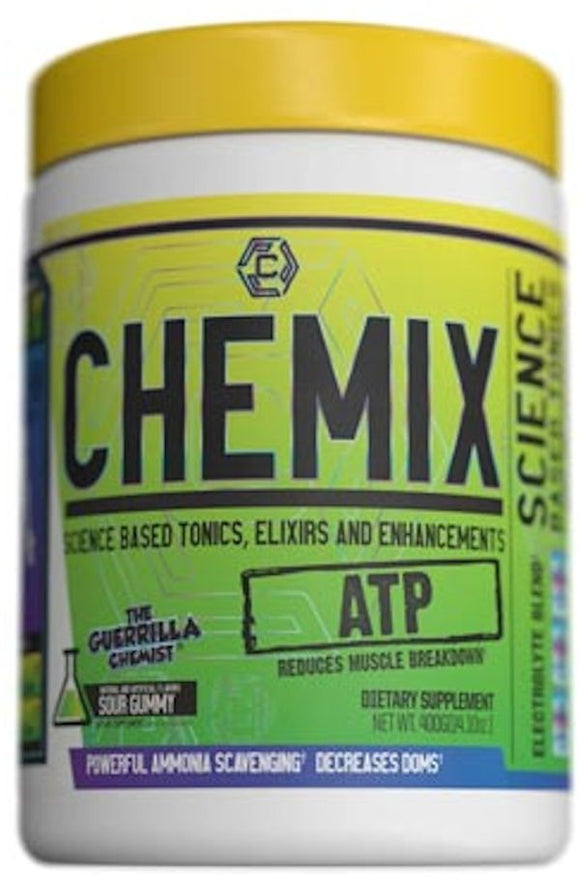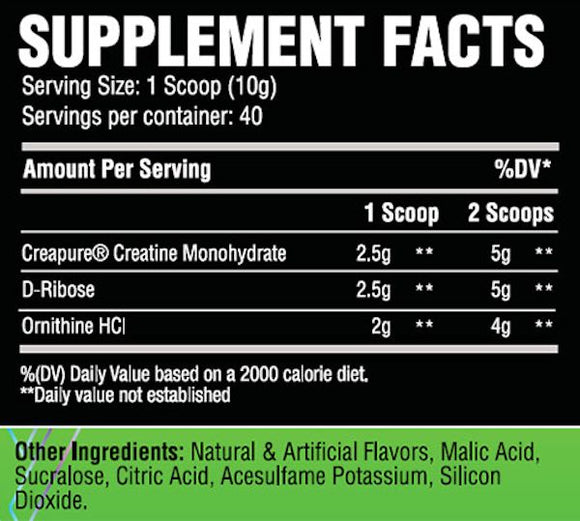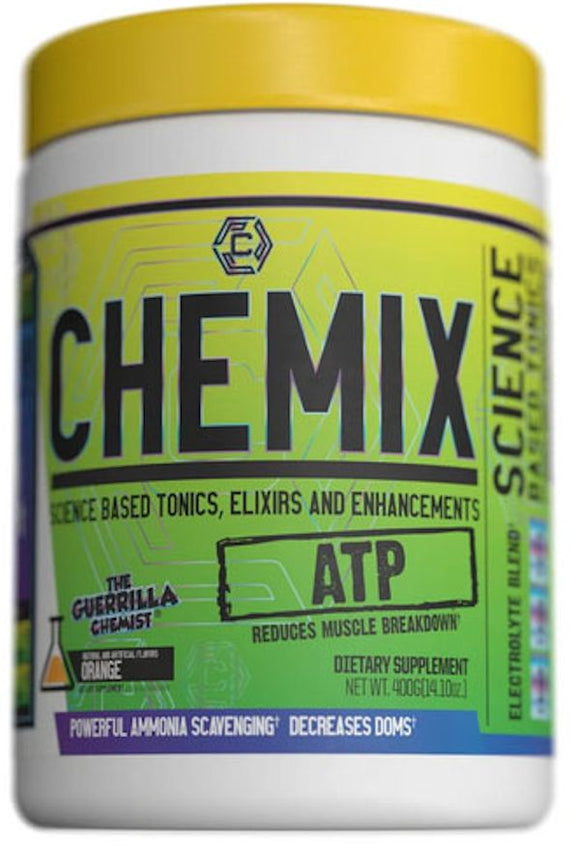Chemix ATP, highlighting its key features and benefits. Adenosine triphosphate (ATP) is indeed a crucial molecule in the body responsible for energy transfer within cells.
Let's break down the claims and benefits:
Reduces Muscle Breakdown†: ATP Pre-Workout claims to have ingredients or mechanisms aimed at minimizing muscle breakdown during exercise. This is important for preserving muscle mass and promoting recovery.
Powerful Ammonia Scavenging†: Ammonia is a byproduct of protein metabolism that can contribute to fatigue and muscle soreness. ATP Pre-Workout claims to contain ingredients that help scavenge or reduce ammonia levels, it could potentially enhance exercise performance and reduce fatigue.
Decreases DOMS†: DOMS stands for Delayed Onset Muscle Soreness, which refers to the muscle pain or discomfort that occurs after intense or unaccustomed exercise. ATP Pre-Workout is claimed to decrease DOMS, it suggests potential benefits in reducing post-workout muscle soreness.
Increases Cellular Hydration†: Cellular hydration is essential for proper cell function, including muscle cells. ATP Pre-Workout is claims to increase cellular hydration, it may help maintain optimal conditions for cellular processes during exercise.
SUPPLEMENT FACTS
Serving Size: 1 scoop (10g)
Servings per container: 40
Amount Per Serving %DV
Creapure (Creatine Monohydrate) 2.5g **
D-Ribose 2.5g **
Ornithine HCI 2g **
Other Ingredients: Natural and artificial Flavors, Malic Acid, Sucralose, Citric Acid, Acesulfame Potassium, Silicon Dioxide.
-
Mikulski, Tomasz, et al. "Effects of supplementation with branched chain amino acids and ornithine aspartate on plasma ammonia and central fatigue during exercise in healthy men." Folia Neuropathol 53.4 (2015): 377-86.
-
Staedt, Ulrich, et al. "Effects of ornithine aspartate on plasma ammonia and plasma amino acids in patients with cirrhosis. A double-blind, randomized study using a four-fold crossover design." Journal of hepatology 19.3 (1993): 424-430.
-
Saks, V. A., et al. "Role of the creatine/phosphocreatine system in the regulation of mitochondrial respiration." Acta Physiologica Scandinavica 168.4 (2000): 635-641.
-
Guimarães-Ferreira, Lucas. "Role of the phosphocreatine system on energetic homeostasis in skeletal and cardiac muscles." Einstein (Sao Paulo) 12 (2014): 126-131.
-
Hespel, Peter, et al. "Creatine supplementation: exploring the role of the creatine kinase/phosphocreatine system in human muscle." Canadian journal of applied physiology 26.S1 (2001): S79-S102.
-
Kreider, R. B., et al. "Effects of oral D-ribose supplementation on anaerobic capacity and selected metabolic markers in healthy males." International journal of sport nutrition and exercise metabolism 13.1 (2003): 76-86.
-
Cao, Wei, et al. "Effect of D-ribose supplementation on delayed onset muscle soreness induced by plyometric exercise in college students." Journal of the International Society of Sports Nutrition 17.1 (2020): 1-9.
-
Kerksick, C., et al. "Effects of ribose supplementation prior to and during intense exercise on anaerobic capacity and metabolic markers." International journal of sport nutrition and exercise metabolism 15.6 (2005): 653-664.
-
Seifert, John G., Allison Brumet, and John A. St Cyr. "The influence of D-ribose ingestion and fitness level on performance and recovery." Journal of the International Society of Sports Nutrition 14.1 (2017): 1-6


